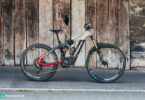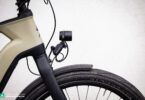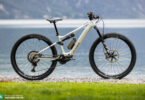With the new SmartphoneGrip, Bosch present a clever smartphone mount for all owners of Bosch Smart System equipped bikes. With it, you can turn your smartphone into an ebike display. What else can the new mount do that the competition can’t? We put it to the test to find out.
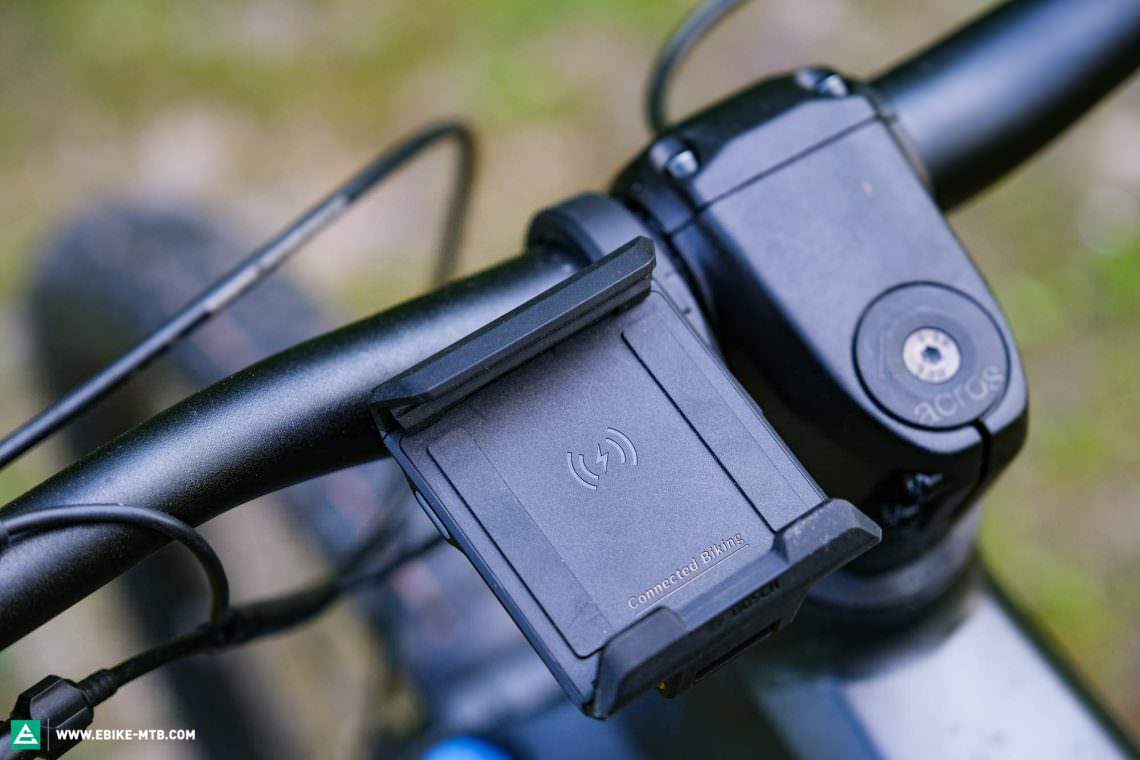
With the new Bosch SmartphoneGrip, your smartphone replaces the display and offers easy to use navigation. However, the € 49.90 SmartphoneGrip is exclusively compatible with Bosch’s new Smart System. If your Bosch bike doesn’t have the Kiox 300 display, you’ll have to retrofit the bracket. If you already have a Kiox 300 display on your bike, mounting the SmartphoneGrip couldn’t be easier: simply remove the Kiox 300 display and attach the SmartphoneGrip to the same bracket. On some ebikes, the bracket will have to be tilted a little further upwards. The SmartphoneGrip needs more space than the Kiox 300 display and it only allows you to mount your smartphone horizontally.

The SmartphoneGrip has a very sturdy spring-loaded clamping mechanism. According to Bosch, it can accommodate smartphones measuring from 67 to 88 mm wide and 123 to 175 mm long. That covers almost every modern smartphone as well as our 12-year-old Samsung Galaxy 1 mobile phone with a 4″ display, which we found in the bottom drawer of one of our office desks ;). The clamps use a soft rubber with recesses in the middle so that they don’t accidentally push any of the buttons on the side of your phone. Once in place, your smartphone will stay put, though Bosch only allow riding down drops of up to 15 cm with the SmartphoneGrip. No jumps. However, we had no issues with the phone slipping even while riding trails – but we’re not making any claims here, so you can’t hold us liable if you destroy your smartphone. You can easily remove your phone from the handlebar together with the SmartphoneGrip and store it in your backpack if you’re going to tackle rougher terrain and don’t want to risk damaging your smartphone. Depending on the intended use, you can also switch back and forth between the Kiox 300 display for quick post-work trail rides and the SmartphoneGrip for longer, more leisurely tours. If, on the other hand, you’re looking for a more permanent solution, you can lock the bracket of the SmartphoneGrip with a pin, so that it can’t be removed from the handlebars that quickly.
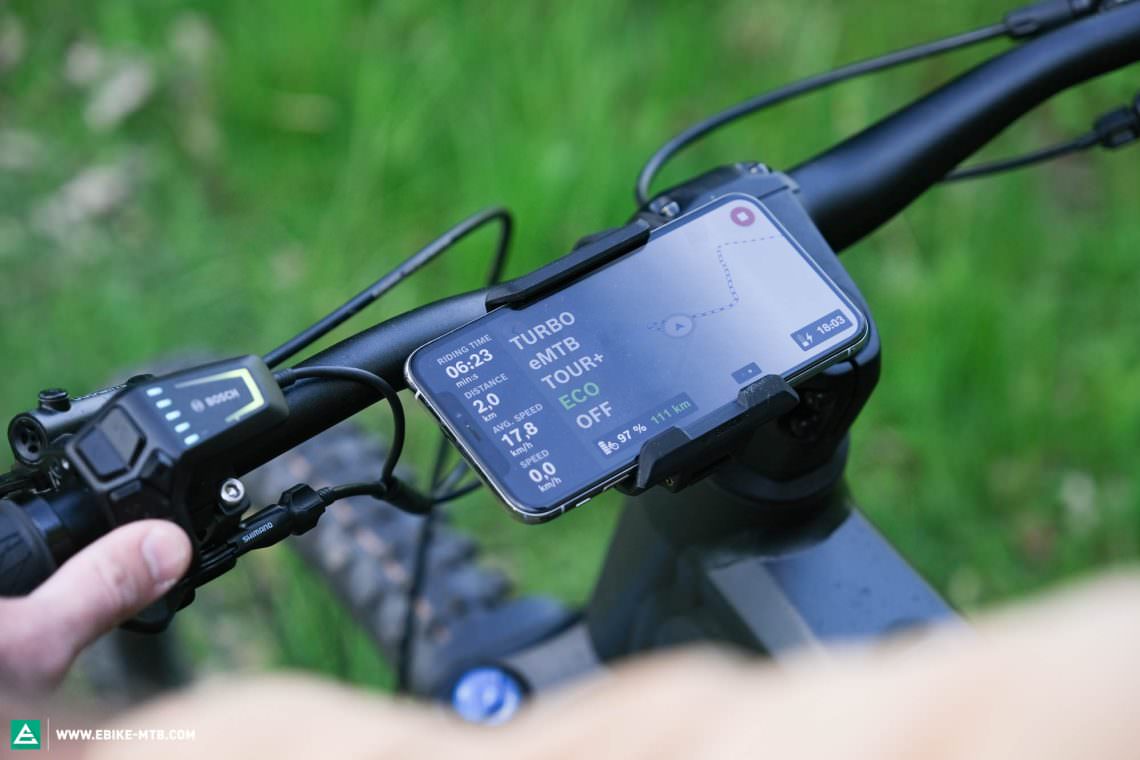
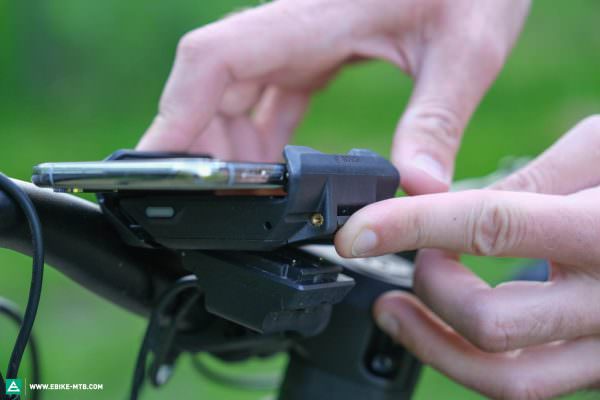
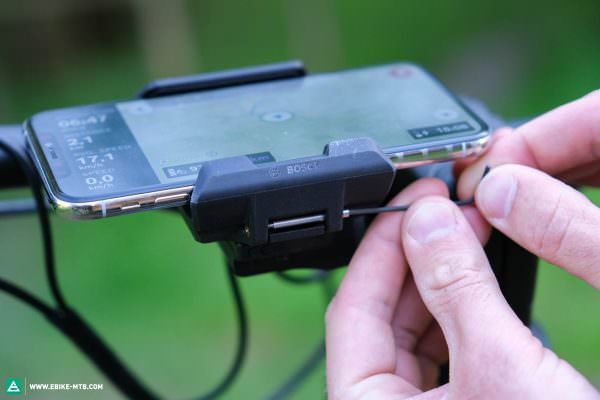
The SmartphoneGrip doesn’t just use the same interface as the Kiox 300 display, but also the same electrical connections. As a result, Bosch were able to integrate an inductive charging function into the SmartphoneGrip, producing a charging current of 1.5 amps at 5 volts. If you paid attention during school physics, you’ll know this corresponds to a charging output of 7.5 watts. Some of this dissipates as heat in the induction pad. Inductive charging works best if the distance between the smartphone and the mount is as small as possible, and the smartphone isn’t covered in an additional protective case. When the display is at its brightest and you’re using the navigation mode, the SmartphoneGrip will only charge your smartphone very slowly. If you were expecting a 120-watt fast charger, allowing you to charge an almost empty smartphone with enough power to last the day during a short ride, you’ll be disappointed. If the smartphone is currently being inductively charged, a window pops up in the eBike Flow app and the diode on the left side of the mount will glow yellow. If your smartphone isn’t compatible with inductive charging, you can use the micro USB-A cable. With the cable, the charging power is 5 watts. If you’re using the cable to charge your smartphone, the diode will glow blue. Green means your smartphone is fully charged and if it’s flashing red, there’s an error. For example, this may indicate that there’s a metallic object interfering with the induction, or the SmartphoneGrip is running hot and needs to cool down. However, we’re yet to encounter any of these scenarios.
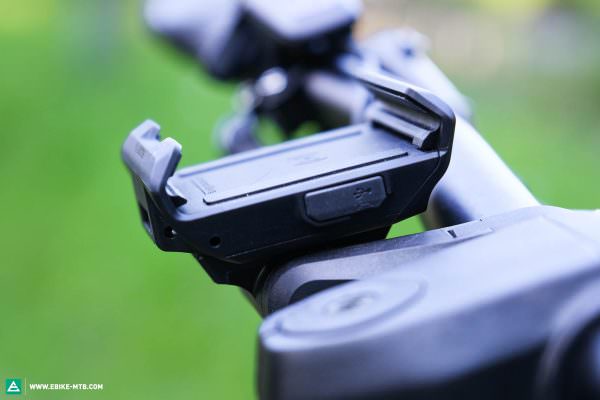
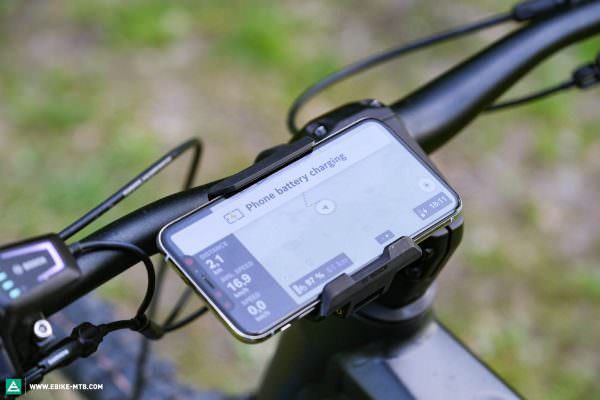
Together with the SmartphoneGrip mount, Bosch have updated the eBike Flow app and introduced the Ride Screen, enabling a seamless user experience between the smartphone, ebike and rider. The Ride Screen also works without the SmartphoneGrip. If you’ve got your smartphone attached to the handlebar and paired with the Bosch LED Remote, you can switch back and forth between a map view for navigation or a standard data screen via the remote. The navigation function works well, but the scope of this review doesn’t allow us to go into detail here. Overall, we were very disappointed when using the Ride Screen together with the Bosch LED Remote. The functionality was significantly more refined with the Bosch SmartphoneHub and COBI.Bike two smartphone mounting systems for the previous generation Bosch motors. The COBI.Bike app had more functions, such as fitness tracking and allowing you to control your music and answer calls. In the eBike Flow app, on the other hand, you can really only toggle between two screens. We’re expecting additional functions to be added during the Smart System lifecycle.

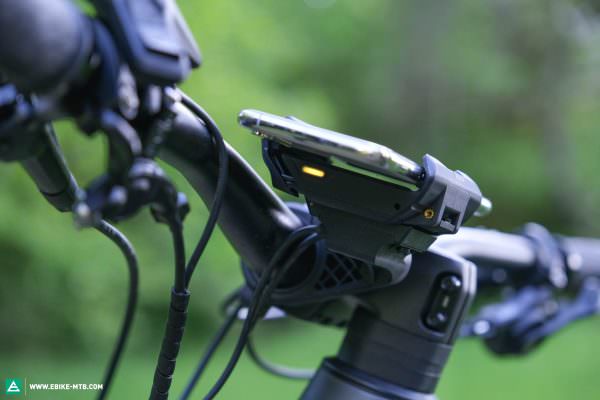
The Bosch SmartphoneGrip offers a secure fit and a convenient on-the-move charging function for your smartphone. Thanks to the quick and easy installation, it’s very flexible, allowing you to switch between the Kiox 300 display and the SmartphoneGrip in the blink of an eye. The current software functions of the Bosch eBike Flow app and Ride Screen mode are very limited, though there’s nothing to complain about regarding the rest of the system.
Tops
- easy to attach and remove
- secure fit
- charging function
Flops
- the current range of app functions is severely limited
Did you enjoy this article? If so, we would be stoked if you decide to support us with a monthly contribution. By becoming a supporter of E-MOUNTAINBIKE, you will help secure a sustainable future for high-quality cycling journalism. Click here to learn more.
Words: Rudolf Fischer Photos: Mike Hunger





